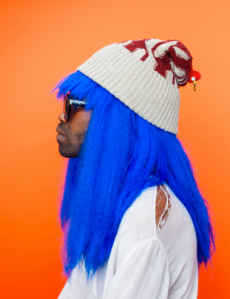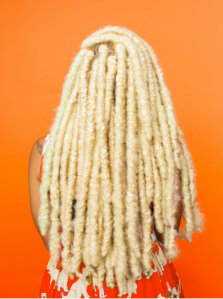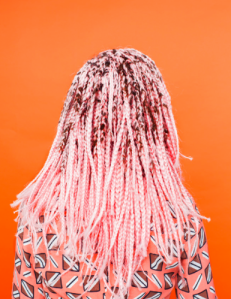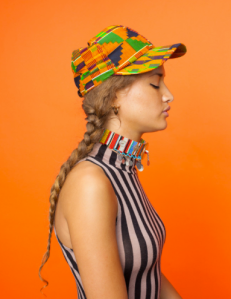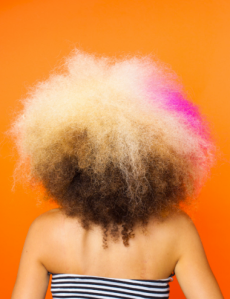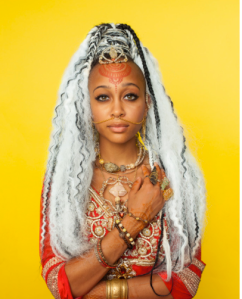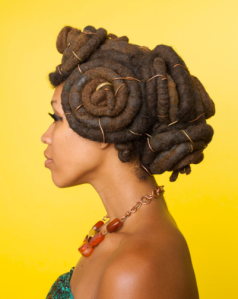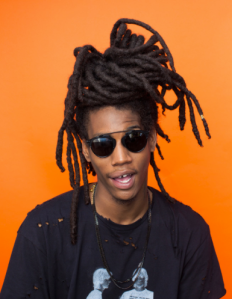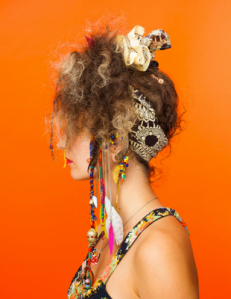It is clear that hair plays a large part in African-American culture. Throughout history, you can argue that hair plays a more important part in African-American culture than any other culture.
Many historians believe that since the beginning of African civilizations, hairstyles have been used to convey messages to greater society. As early as the 15th century, different styles could “indicate a person’s marital status, age, religion, ethnic identity, wealth and rank within the community.” Unkempt hair in nearly every West African culture was considered unattractive to the opposite sex and a sign that one was dirty, had bad morals or was even insane. In Yoruba culture in West Africa, people braided their hair to send messages to the gods. The hair is the most elevated part of the body and was therefore considered a portal for spirits to pass through to the soul. Because of the cultural and spiritual importance of hair for Africans, the practice of having their heads involuntarily shaved before being sold as slaves was in itself a dehumanizing act. “The shaved head was the first step the Europeans took to erase the slaves’ culture and alter the relationship between the African and his or her hair.”
During the slave years, many African-Americans were not able to be focused on their hairstyles. Due to the grueling and inhumane conditions they were forced to endure, they simple had no time, energy or product to use in their hair. During this time, survival was much more important than hair.
But, after the slave trade was outlawed, many African-Americans were able to focus on their hair, as they entered society for the first time. It was during this time period that hair straightening became popular. Hair straighteners suggest to blacks that only through changing physical features will persons of African descent be afforded class mobility within African American communities and social acceptance by the dominant culture” (Rooks 1998: 177). At the time, wig manufacturers were the only companies that advertised an African American standard of beauty.
Madam C.J. Walker was beginning to make her fortune through the success of her hair products. Through this business, she was able to become the first female self-made millionaire in America.
This was a time when Blacks were creating their own successes in society and staking out a niche in the northern cities such as Chicago and Harlem. Part of their personal success at this time, however, was their perceived ability to assimilate, which is portrayed by unnaturally straight hair.
Even in Winold Reiss’s Brown Madonna, which was painted during the post-slave era of the early 1900’s, the Virgin Mother is shown with straight hair. Painted toward the beginning of the New Negro movement in 1925, the work showcased the sense of racial pride popular during the 1920s and 1930s. This classically white symbol of purity and virtue was created with dark skin, asserting the value and respectability of the Black race.
The Afro, which hit its stride in the 1960s, was an expression of pride, connection, power, revolution and differentiation. African-American’s began to use their hair as a way to showcase a link to their African ancestors and Blacks throughout the diaspora. The Afro, in conjunction with the Civil Rights movement, was helping to define black identity (Byrd and Tharps 2001: 51).
The Black Is Beautiful movement began during this era as well. It aimed to dispel the notion in many world cultures that African-American natural features such as skin color, facial features and hair are inherently ugly. The movement also encouraged men and women to stop trying to eliminate African-identified traits by straightening their hair and attempting tolighten or bleach their skin.
Hip Hop culture in the 1980s created a slew of new trends, one being the “fade” for men. The fade is a hairstyle worn predominantly by black men in which the hair starts off short at the bottom and lengthens as it reaches the top. This style afforded the wearer an opportunity for individuality, as people often cut designs into the back and sides or added different colors to the top. Hip Hop also had an influence on young black women. Asymmetric cuts like wedges, stacks or finger curls were popular during this time.
In current culture, the variety of hair styles that can be worn by an African-American are used to showcase a unique personal style. No longer are “relaxers” the only type of hair style. By using weaves, braids, hair-coloring, and a variety of different techniques, every African-American can come up with a unique aesthetic that fits their individual lifestyles.
Recently, Vogue ran the AfroPunk Hair Portrait spread on their website. It showed a variety of young African-Americans, all proudly displaying their unique hairstyles. The wide range of colors and styles clearly shows that many young people today are embracing their natural hair and using that hair to create an overall look that expresses their exact personality. Never again will these African-American’s feel the need to be boxed into one particular hairstyle. Even those who choose to use relaxers are just as beautiful as those who choose to wear their hair naturally. The pictures below show that all hair is beautiful and unique, especially in the African-American community, where the hair varies across a large spectrum of hairstyles. Check out the pictures of these beautiful individuals below, who all have beautiful hair. Additionally, check out the rest of the hair portraits by clicking here.
All Photos below are Courtesy of Vogue
All Portraits Attributed to the Artist Awol Erizku
